How THCA Kief Is Made: From Plant to Product
The world of cannabis concentrates has experienced explosive growth in recent years, with enthusiasts and medical users alike seeking the most potent, pure, and effective products available. Among these concentrates, THCA kief stands out as one of the most sought-after forms—a golden powder that represents the pinnacle of cannabinoid concentration without the need for solvents or complex chemical processes.
But how THCA kief is made remains a mystery to many consumers. Understanding the THCA kief production process not only deepens your appreciation for this remarkable product but also helps you make informed decisions when selecting high-quality kief for your needs.
The extraction process matters immensely when it comes to quality, potency, and purity. Unlike many cannabis concentrates that require hydrocarbon solvents, heat, or pressure, making THCA kief relies on mechanical separation—a gentle, natural process that preserves the delicate cannabinoid and terpene profiles that make cannabis so valuable. This production method ensures you're getting a product that's as close to the plant's natural state as possible, just concentrated to incredible potency levels.
In this comprehensive guide, we'll walk through every stage of the journey from cannabis plant to premium THCA kief, exploring the cultivation practices, extraction techniques, quality control measures, and preservation methods that separate exceptional kief from mediocre products.
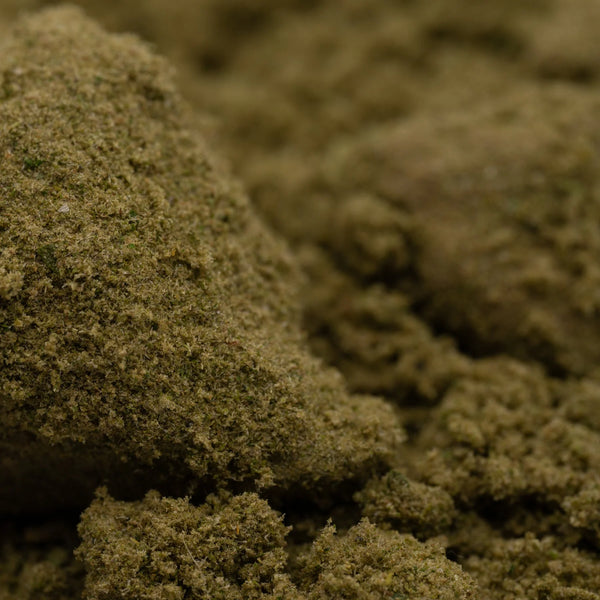
Cannabis Cultivation for THCA: Setting the Foundation
The journey toward premium THCA kief begins long before any extraction takes place—it starts in the cultivation room or field where cannabis plants are carefully nurtured to produce maximum trichome density and cannabinoid content.
Strain Selection: The Genetic Blueprint
Not all cannabis strains are created equal when it comes to THCA kief production. Cultivators must carefully select genetics known for prolific trichome production and high THCA content. Strains bred specifically for concentrate production often feature dense crystalline coverage that makes them ideal candidates for kief extraction.
High-THCA strains typically exhibit visible frost—a silvery, crystalline coating that covers the flowers and even surrounding leaves. These trichome-dense varieties have been selectively bred over generations to maximize the resin glands that produce cannabinoids. Popular choices include phenotypes from lineages like White Widow, Chemdog, and various OG Kush descendants, all known for their exceptional resin production.
Growing Conditions That Maximize Trichome Development
The environment in which cannabis grows dramatically influences trichome production. Temperature, humidity, light intensity, and spectrum all play critical roles in determining how many trichomes develop and how much THCA they contain.
Temperature control is particularly crucial. Cannabis plants produce more trichomes as a protective response to environmental stress—particularly UV light and temperature fluctuations. However, excessive heat can actually degrade cannabinoids and reduce trichome production. The sweet spot for most cultivars falls between 70-80°F during the day, with a 10-15 degree drop at night.
Light spectrum matters enormously. UV-B light, in particular, has been shown to increase trichome density as plants produce more resin to protect themselves from potentially damaging radiation. Many professional cultivators incorporate UV-B supplementation during the flowering stage to maximize trichome development.
Humidity must be carefully managed throughout the growth cycle. During flowering—when trichomes develop most rapidly—relative humidity should be gradually reduced from around 50% to 40% or lower. This reduction encourages the plant to produce more protective resin while also preventing mold and mildew that could contaminate the final kief product.
Harvest Timing: Capturing Peak THCA Levels
Perhaps no decision impacts THCA kief extraction quality more than harvest timing. THCA levels are not static—they change as the plant matures, and timing the harvest to coincide with peak THCA concentration is crucial for producing premium kief.
Cannabis cultivators use trichome maturity as their primary harvest indicator. Under magnification, trichomes transition from clear to cloudy to amber as they mature. For maximum THCA content, harvest should occur when trichomes are mostly cloudy with minimal amber coloration. This represents the peak of cannabinoid production before THCA begins degrading into CBN.
Harvesting too early results in lower overall potency and underdeveloped terpene profiles. Harvesting too late means THCA has already begun converting to other cannabinoids through natural decarboxylation. The window of optimal harvest might only last a few days, requiring constant monitoring and quick action when conditions are right.
Organic vs Conventional Growing: Purity Considerations
The cultivation method—organic versus conventional—significantly impacts the purity and safety of the final kief product. Since making THCA kief is a concentration process, any contaminants present on the plant material become concentrated as well.
Organic cultivation eliminates synthetic pesticides, herbicides, and fertilizers that could leave residues on trichomes. These residues, while perhaps acceptable in small amounts on smokable flower, become concerning when concentrated 3-5 times in kief form. Premium kief producers prioritize organic or sustainably grown source material to ensure the cleanest possible end product.
Hemp vs Marijuana Sources: Legal Considerations
An important distinction in the modern cannabis market is the difference between hemp-derived and marijuana-derived THCA kief. Thanks to the 2018 Farm Bill, hemp-derived THCA products (from plants containing less than 0.3% Delta-9 THC by dry weight) are federally legal in the United States, while marijuana-derived products remain federally prohibited despite state-level legalization in many areas.
This legal distinction has created a booming industry in hemp-derived THCA products. Many cultivators now grow high-THCA hemp specifically for concentrate production—plants that contain high levels of THCA but remain under the 0.3% Delta-9 THC threshold required by law. The THCA kief manufacturing process is identical regardless of whether the source material is classified as hemp or marijuana; only the legal status differs.
Trichome Development: Understanding the Source
To truly understand how to produce THCA kief, we must first understand trichomes—the microscopic resin glands that produce and store cannabinoids, terpenes, and flavonoids.
What Trichomes Are and Their Purpose
Trichomes are appendages that protrude from the surface of cannabis plants, particularly dense on flowers and surrounding leaves. These glandular structures serve multiple protective functions for the plant: they deter herbivores with their bitter taste, protect against UV radiation, help maintain moisture, and even trap insect pests.
There are three main types of trichomes on cannabis plants:
Bulbous trichomes are the smallest (10-15 micrometers), appearing across the entire plant surface. While they contain cannabinoids, their small size makes them less valuable for THCA kief creation.
Capitate sessile trichomes are slightly larger (25-100 micrometers) with a short stalk and bulbous head. These are more abundant and contribute more significantly to cannabinoid production.
Capitate-stalked trichomes are the largest (50-500 micrometers) and most abundant on female cannabis flowers. These mushroom-shaped structures produce the vast majority of cannabinoids and terpenes. The bulbous head contains secretory cells that manufacture and store THCA in an oil-based resin. When we talk about collecting kief, we're primarily targeting these capitate-stalked trichome heads.
Trichome Maturity Indicators
Identifying trichome maturity is essential for determining harvest readiness and, consequently, the quality of kief that can be produced. Maturity is assessed through visual inspection, typically using a jeweler's loupe or digital microscope with at least 60x magnification.
Clear trichomes indicate immaturity. The cannabinoid content is still developing, and THCA levels haven't reached their peak. Flowers harvested at this stage will produce lower-quality kief with reduced potency.
Cloudy or milky trichomes signal peak maturity. The trichome heads appear opaque white, indicating maximum cannabinoid production. This is the optimal harvest window for THCA kief extraction, when potency and terpene profiles are at their best.
Amber trichomes suggest over-maturity. The cloudiness takes on a golden or amber hue as THCA begins degrading into CBN and other cannabinoids. While some amber trichomes are acceptable (and preferred by some consumers for their effects), predominantly amber trichomes indicate a missed optimal harvest window for maximum THCA content.
Why Trichomes Contain THCA
The presence of THCA rather than THC in living cannabis plants is a matter of chemistry and plant biology. Cannabis plants synthesize THCA, not THC, through enzymatic processes within trichome secretory cells. THCA serves as the acidic precursor to THC—it's THC with an additional carboxyl group (COOH) attached to its molecular structure.
This acidic form is more stable than THC and doesn't produce psychoactive effects. THCA only converts to THC through decarboxylation—a process that removes the carboxyl group through exposure to heat or, very gradually, through aging and light exposure. This is why fresh cannabis doesn't produce psychoactive effects when eaten raw, but becomes psychoactive when smoked, vaporized, or cooked.
For kief producers, preserving THCA in its acidic form is crucial. Many consumers specifically seek THCA products for their unique properties and potential benefits, which differ from decarboxylated THC. The cold extraction THCA methods used in kief production are specifically designed to prevent premature decarboxylation.
Visual Identification of Premium Source Material
Before any extraction begins, experienced producers visually assess cannabis material to predict the quality and yield of kief production. High-quality source material for dry sift THCA kief exhibits several telltale characteristics:
Dense trichome coverage appears as a thick, frosty coating that makes the plant material appear silvery or white. This "frost" should extend beyond the flowers themselves onto surrounding sugar leaves. When handled, premium material should feel sticky—the resin glands adhering to fingers—and leave behind a visible residue.
The trichomes themselves should appear intact and upright when viewed under magnification, resembling a forest of tiny mushrooms. Damaged, degraded, or collapsed trichomes yield poor-quality kief and indicate improper handling, storage, or overly mature material.
Color provides important clues: vibrant green plant material with brilliant white or slightly golden trichomes indicates proper harvest timing and handling. Excessive brown coloration suggests degradation, while an overly light green or yellow color might indicate nutrient deficiencies that affected trichome production.
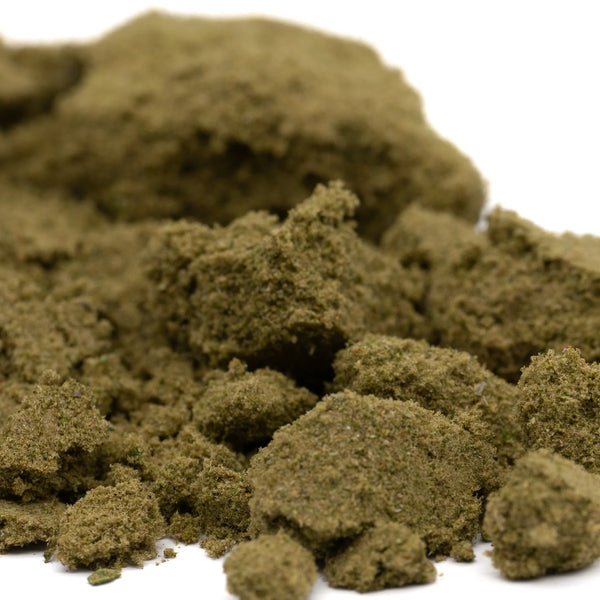
Cold Extraction Methods: The Heart of Kief Production
The extraction phase is where cannabis flower transforms into concentrated kief. Unlike many concentrate production methods that employ solvents, heat, or pressure, cannabis kief extraction relies on mechanical separation—using physical force to separate trichome heads from plant material.
Dry Sifting Technique: The Traditional Method
Dry sifting remains the most common method for how THCA kief is made in both commercial and home settings. This technique uses screens to separate trichome heads (which are small enough to pass through) from larger plant material (which cannot).
The basic process involves placing dried cannabis material on a fine mesh screen and agitating it. As the material moves across the screen, trichome heads break away from the plant and fall through the mesh openings, collecting in a receptacle below. What remains on top of the screen is the depleted plant material, while what collects below is kief.
The elegance of dry sifting lies in its simplicity and the fact that it requires no solvents, heat, or complex equipment. It's purely mechanical separation, preserving the natural state of cannabinoids and terpenes. This method produces what many consider the purest form of concentrate because nothing has been added or chemically altered.
Screen Sizes and Micron Ratings: The Science of Separation
The quality and purity of THCA kief production depends heavily on screen selection. Screens are rated by their micron size—the size of the openings in the mesh. Choosing the right micron rating is crucial for optimizing both yield and purity.
Trichome heads typically range from 45 to 150 microns in diameter, with most falling between 70 and 120 microns. However, plant material particles, stems, and other contaminants can be much smaller. Screen selection must therefore balance collecting trichome heads while excluding unwanted material.
150-220 micron screens are considered coarse and will allow significant plant material through along with trichomes. The resulting kief has lower purity but higher yield. This grade is sometimes called "cooking grade" and works well for edibles where appearance matters less.
70-120 micron screens represent the sweet spot for premium kief production. This range effectively captures most trichome heads while excluding the majority of plant material. The result is golden, aromatic kief with high purity.
45-70 micron screens produce ultra-premium kief with exceptional purity, though yields are lower. Only the smallest, most resin-rich trichome heads pass through, resulting in a lighter color and more refined product.
Professional THCA kief manufacturing operations often use multiple screen sizes in succession, starting with coarser mesh and progressing to finer screens. This multi-stage approach separates the kief into different quality grades.
Temperature Control: Preserving THCA Through Cold Extraction
Temperature management is critical in cold extraction THCA production. Both the plant material and the extraction environment should be kept cold throughout the process—ideally between 32-45°F.
Cold temperatures serve multiple purposes. First, they make trichome heads more brittle, allowing them to break away from the plant more easily with less agitation. When trichomes are cold, they snap off cleanly rather than smearing or degrading.
Second, cold temperatures prevent decarboxylation. Even modest heat can begin converting THCA to THC, which is undesirable for those specifically seeking THCA products. By keeping everything cold, producers ensure the cannabinoid profile remains in its natural, acidic state.
Third, cold reduces terpene loss. These volatile aromatic compounds evaporate at relatively low temperatures. A cold extraction environment preserves the full terpene profile, resulting in more flavorful and aromatic kief.
Many professional operations freeze their cannabis material for 24-48 hours before extraction and conduct the sifting process in cold rooms. Some advanced systems even use dry ice or liquid nitrogen to achieve extreme cold, though this requires careful handling to prevent freeze damage to equipment.
Multi-Stage Screening: Achieving Premium Quality
High-end making THCA kief operations employ multi-stage screening systems that separate kief into different quality grades. This approach maximizes both the value and versatility of the final products.
A typical professional setup might use three to five screens stacked vertically, each with progressively finer mesh. Cannabis material starts at the top (coarsest screen) and works downward through finer and finer screens. Each level captures a different grade of kief:
The first pass through coarse screens (150+ microns) removes the majority of plant material while collecting mixed trichomes and some contamination. This produces the highest yield but lowest purity.
The second pass through medium screens (90-120 microns) collects the bulk of mature trichome heads. This middle grade represents the sweet spot of yield and quality—what most consumers recognize as premium kief.
The third pass through fine screens (70-90 microns) captures only the smallest, most resin-rich trichome heads. This produces the most refined kief with exceptional purity and potency.
Some operations include additional screening stages below 70 microns to capture ultra-fine material, though yields at this level are minimal. The resulting product is sometimes called "99% heads" due to its exceptionally high trichome-to-contaminant ratio.
Ice Water Extraction Alternative: Bubble Hash Method
While dry sifting dominates commercial THCA kief extraction, ice water extraction (also called bubble hash or water hash) represents an alternative approach that some producers prefer for certain applications.
This method involves submerging cannabis material in ice-cold water and agitating it vigorously. The extreme cold and physical agitation cause trichome heads to break away from the plant. Because trichomes are denser than water, they sink while plant material floats or remains suspended. The mixture is then filtered through a series of mesh bags with different micron ratings, similar to dry sifting screens.
The advantage of ice water extraction is that it can sometimes achieve higher purity, as the water medium helps separate trichomes from plant material more thoroughly. The extreme cold also ensures no decarboxylation occurs.
However, this method requires more equipment, water, and processing time. Additionally, the resulting product must be carefully dried to prevent mold or degradation, adding another step to the THCA kief production process. For these reasons, dry sifting remains more common for kief production specifically, while ice water extraction is often preferred for higher-grade hash products.
Freeze-Drying Processes: Preserving Quality Post-Extraction
Whether using dry sift or ice water methods, properly drying and stabilizing kief is crucial for preservation. For dry-sifted kief, this step is minimal since the material is already dry. However, for ice water extraction or in humid environments, moisture management becomes critical.
Freeze-drying (lyophilization) represents the gold standard for drying sensitive cannabis products. This process freezes the material and then removes moisture through sublimation—ice converting directly to vapor without passing through a liquid phase. This prevents the damage and degradation that can occur with conventional drying methods.
Freeze-drying preserves terpenes exceptionally well since the process occurs at low temperatures and in a vacuum, preventing volatile compound loss. It also prevents microbial growth that could occur during slow air-drying. The result is kief with maximum potency, flavor, and shelf life.
While freeze-drying equipment is expensive and complex, making it impractical for small-scale operations, professional THCA kief manufacturing facilities increasingly employ this technology to ensure consistent, premium-quality products.
Quality Control & Testing: Ensuring Purity and Potency
Professional how to produce THCA kief operations implement rigorous quality control measures throughout the production process. Testing and verification separate premium products from questionable alternatives.
Lab Testing for Cannabinoid Content
Third-party laboratory testing is essential for verifying cannabinoid content and potency. High-Performance Liquid Chromatography (HPLC) is the preferred testing method for THCA products because it analyzes cannabinoids without applying heat, thus measuring THCA content directly rather than converting it to THC during testing.
Potency testing reveals not only THCA content but the full cannabinoid profile, including CBD, CBG, CBC, CBN, and Delta-9 THC. Premium kief typically contains 40-80% THCA, with total cannabinoid content sometimes exceeding 90% in ultra-refined products.
Understanding these numbers helps consumers make informed decisions. Higher THCA percentages indicate more effective extraction and better source material, though the complete cannabinoid profile matters more than any single number.
Purity Verification: What Should and Shouldn't Be Present
Beyond cannabinoid content, testing verifies kief purity by identifying and quantifying any contaminants. Purity testing looks for:
Plant material content: Visual inspection under microscopy can identify plant particles, determining whether the kief is predominantly trichome heads or contaminated with vegetative matter. Premium kief should show minimal plant material under magnification.
Foreign material: Dust, dirt, insect parts, or other contaminants indicate poor production practices or contaminated source material.
Moisture content: Excessive moisture (above 10-12%) can lead to mold growth during storage, while too little moisture (below 5%) makes the kief dry and prone to degradation.
Contaminant Screening: Protecting Consumer Safety
Comprehensive testing includes screening for various contaminants that could pose health risks:
Pesticide testing identifies residues from agricultural chemicals. Since kief is a concentrated product, even low pesticide levels in source material become significantly elevated in the final product. Premium producers use only pesticide-free source material, but testing provides verification and consumer confidence.
Heavy metals testing looks for lead, mercury, cadmium, arsenic, and other toxic metals that plants can absorb from contaminated soil or water. Cannabis is a bioaccumulator, meaning it readily absorbs compounds from its growing medium—including heavy metals.
Microbial testing screens for dangerous bacteria (E. coli, Salmonella), mold, and yeast. While properly produced kief stored in dry conditions should be free of microbial contaminants, testing provides assurance.
Mycotoxin testing identifies toxic compounds produced by certain molds, including aflatoxins and ochratoxins, which can cause serious health effects even in small amounts.
THCA Percentage Verification: Understanding Potency Claims
Marketing claims about potency must be backed by testing data. Reputable THCA kief creation operations provide clear, accurate information about cannabinoid content.
It's important to understand that "total THC" and "THCA" are different measurements. Total THC represents THCA plus any existing THC plus THCA's potential THC content if fully decarboxylated. The calculation is: Total THC = THC + (THCA × 0.877). The 0.877 factor accounts for the molecular weight lost when the carboxyl group is removed during decarboxylation.
A product listed as "70% THCA" might show "60% Total THC" because not all of the THCA will convert to THC even with complete decarboxylation. Understanding these distinctions helps consumers interpret lab reports and make informed purchases.
Certificate of Analysis (COA): Your Guarantee of Quality
The Certificate of Analysis is the most important document accompanying any cannabis product. A COA is an official report from an accredited laboratory detailing the product's cannabinoid profile, terpene content, and contaminant screening results.
When evaluating cannabis kief extraction products, always request the COA. Red flags include:
- Unwillingness to provide a COA
- COAs that are outdated (over 12 months old)
- Testing from non-accredited laboratories
- COAs that don't match the specific batch number of your product
- Missing information (no contaminant testing, incomplete cannabinoid profile)
Premium producers proudly display their COAs and update them regularly as new batches are produced. This transparency demonstrates confidence in their product quality and commitment to consumer safety.
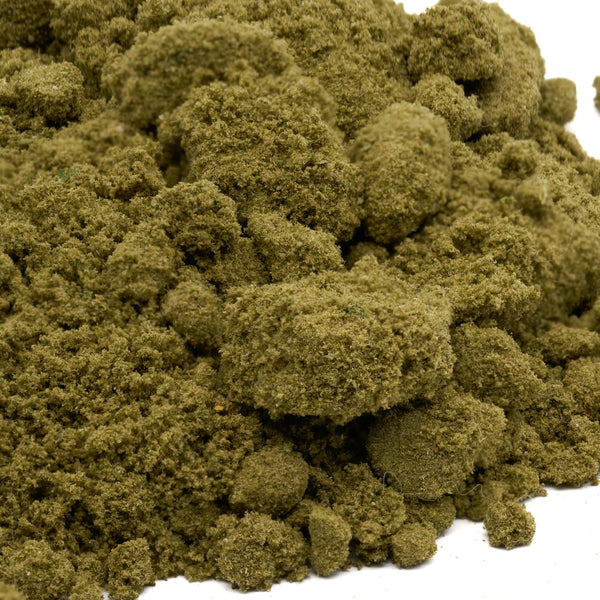
Preservation Techniques: Maintaining Quality from Production to Consumer
Even the highest-quality dry sift THCA kief can degrade rapidly if not properly preserved. Professional producers implement careful storage and packaging strategies to maintain potency, flavor, and purity throughout the product's shelf life.
Preventing Decarboxylation During Production
Temperature control doesn't end with extraction. Throughout handling, packaging, and storage, preventing THCA decarboxylation remains paramount. Even modest temperatures can begin converting THCA to THC over time.
Professional facilities maintain climate-controlled environments throughout production and packaging. Processing rooms are kept between 60-70°F, and products are never exposed to direct heat sources. Equipment like screens and collection vessels are also kept cool between uses.
Static electricity can generate surprising amounts of heat on a microscopic level. Some advanced facilities use anti-static equipment and grounding protocols to prevent the tiny sparks and heat generation that static discharge can cause.
Storage During Processing: Protecting Work in Progress
Between extraction and packaging, kief must be stored carefully. Professional operations use airtight containers kept in cool, dark environments. Glass or food-grade stainless steel containers are preferred because they don't leach chemicals and protect against moisture and oxygen.
Many facilities use refrigerated storage for extended periods, keeping kief at 35-40°F. This dramatically slows any degradation while preventing moisture condensation that can occur with freezing temperatures.
Humidity control is crucial. Storage areas maintain 55-62% relative humidity—dry enough to prevent mold growth but humid enough to prevent the kief from becoming overly desiccated and losing terpenes.
Packaging Methods: The Final Protection
Premium THCA kief manufacturing operations invest in high-quality packaging that protects the product during distribution and consumer storage. Multi-layer packaging provides the best protection:
Primary container: Direct product contact should be with glass or medical-grade silicone. These materials are inert, preventing chemical interaction with the kief. Many premium products use UV-protective amber glass jars.
Humidity control: Small humidity-regulation packets (Boveda packs or similar) maintain optimal moisture levels inside the container, preventing the kief from drying out or becoming too moist.
Tamper-evident sealing: Professional products include tamper-evident seals, ensuring the product hasn't been opened or contaminated between production and purchase.
Child-resistant features: Compliance with safety regulations requires child-resistant packaging, protecting both children and demonstrating the producer's commitment to responsible practices.
Light and Heat Protection: The Invisible Threats
Light, particularly UV radiation, rapidly degrades cannabinoids and terpenes. THCA is especially susceptible to photodegradation, converting to THC and eventually to CBN through light exposure.
Premium packaging blocks UV light entirely. Amber glass, opaque containers, or secondary outer packaging provides this protection. Some producers use specialized mylar bags with UV-blocking properties.
Heat is equally damaging. Packaging should include warnings about storage temperature and recommend consumers keep products in cool, dark places. Some producers include recommendations for refrigerator or even freezer storage for long-term preservation.
The combination of light and heat is particularly destructive. Products shipped during summer months or stored in warm retail environments can degrade significantly. Professional operations use insulated shipping and encourage climate-controlled retail storage.
Nitrogen Flushing: Removing the Oxygen Threat
Oxygen is another enemy of cannabinoid preservation. Oxidation gradually converts THCA and other cannabinoids into degradation products, reducing potency and altering effects. Oxygen also contributes to terpene loss as volatile compounds react and evaporate.
Many premium THCA kief creation operations employ nitrogen flushing during packaging. This process involves filling the container with nitrogen gas before sealing, displacing oxygen and creating an inert atmosphere. Nitrogen is non-reactive and prevents oxidation.
Some producers take this further with vacuum sealing, removing air entirely before sealing. However, this must be done carefully to avoid compressing the kief, which can damage trichome structure.
Commercial vs DIY Production: Understanding the Differences
While professional how THCA kief is made follows the processes described above, many consumers attempt home production. Understanding the differences helps set realistic expectations and highlights why commercial products often justify their price point.
Professional Equipment Advantages
Commercial operations invest heavily in specialized equipment designed specifically for kief production:
Commercial sifting machines can process pounds of material per hour with consistent agitation and perfect screen tension. These machines maintain optimal temperature, control static electricity, and achieve uniform results that manual methods struggle to match.
Industrial cold rooms provide climate-controlled environments that maintain perfect temperature and humidity throughout the extraction process. Home producers might use a freezer, but cannot maintain the precise conditions professional facilities achieve.
Multi-stage screening systems with perfectly tensioned, properly sized screens in stacked configurations allow for simultaneous processing at multiple grades. Setting up equivalent systems at home is impractical and expensive.
Testing equipment in professional facilities enables real-time quality control decisions. Access to microscopy, moisture meters, and even in-house potency testing helps producers optimize their process batch by batch.
Professional freeze-dryers for post-processing ensure perfect preservation. These expensive, specialized machines are impractical for home use but significantly improve the final product quality.
Home Collection Methods: What's Realistically Achievable
Home producers can create respectable kief using simpler methods, though expectations should be calibrated accordingly. The most accessible approach involves a multi-chamber grinder with a kief catcher—a screen-bottomed compartment that collects trichomes that fall through during normal grinding.
Over time, these catchers accumulate kief from regular cannabis use. While this method doesn't match commercial production quality, it requires no additional effort and gradually builds a personal kief collection.
More dedicated home producers might invest in screening boxes—simple wooden or metal frames holding fine mesh screens. By manually agitating dried cannabis over these screens, home producers can create kief similar to commercial products, though yields and consistency will vary.
Some hobbyists build DIY tumbling machines using electric motors and rotating drums lined with screens. While more complex, these can achieve decent results for those willing to invest time and money.
Safety Considerations: Why Professional Matters
THCA kief production process in professional settings includes safety measures that home production typically cannot match:
Contaminant-free environments: Commercial facilities maintain clean rooms with filtered air, preventing contamination from dust, pollen, mold spores, or other airborne contaminants.
Testing protocols: Professional producers test for pesticides, heavy metals, and microbial contaminants—things home producers have no practical way to verify.
Proper handling: Staff trained in food safety and cannabis handling prevent cross-contamination and maintain sanitary conditions throughout production.
Legal compliance: Professional producers operate under regulatory oversight, with inspections, licensing requirements, and accountability that ensure consistent safety standards.
These factors mean that while home-produced kief might be suitable for personal use, commercially produced products offer safety and consistency advantages that justify their cost for many consumers.
Yield Expectations: Managing Reality
Yield—how much kief you get from a given amount of cannabis—varies dramatically based on source material quality, production method, and purity standards.
Professional making THCA kief from premium, trichome-rich material might achieve yields of 3-10% by weight—meaning 100 grams of cannabis produces 3-10 grams of kief. Higher-purity kief yields less because more plant material is excluded.
Home producers typically see lower yields due to less efficient extraction, less optimal source material, and lack of multi-stage screening. Yields of 2-5% are more realistic for DIY production, and first-time producers might see even less as they develop their technique.
It's also important to understand that not all cannabis material is suitable for kief production. Trimmed flowers with dense trichome coverage yield far more than untrimmed material or material with limited visible frost. Professional producers select their source material specifically for extraction efficiency.
Quality Differences: Why Premium Commands Premium Prices
The quality gap between home and professional cannabis kief extraction manifests in several ways:
Potency: Professional kief typically contains 50-80% THCA or higher, while home-produced kief might range from 30-60% depending on technique and source material quality.
Purity: Commercial products with minimal plant material contamination appear lighter in color and have cleaner flavor profiles. Home products often contain more plant matter, resulting in darker color and harsher taste.
Consistency: Professional operations produce identical products batch after batch. Home production varies significantly based on technique, source material, and environmental conditions.
Safety: Tested commercial products guarantee the absence of contaminants. Home producers have no practical way to verify their products are free from pesticides, mold, or other hazards.
Terpene preservation: Professional cold extraction and climate control preserve terpene profiles better than home methods, resulting in more aromatic and flavorful products.
These quality differences explain why serious consumers often choose professionally produced kief despite the higher cost. The investment in equipment, expertise, testing, and facilities that professional operations represent translates directly into superior products.
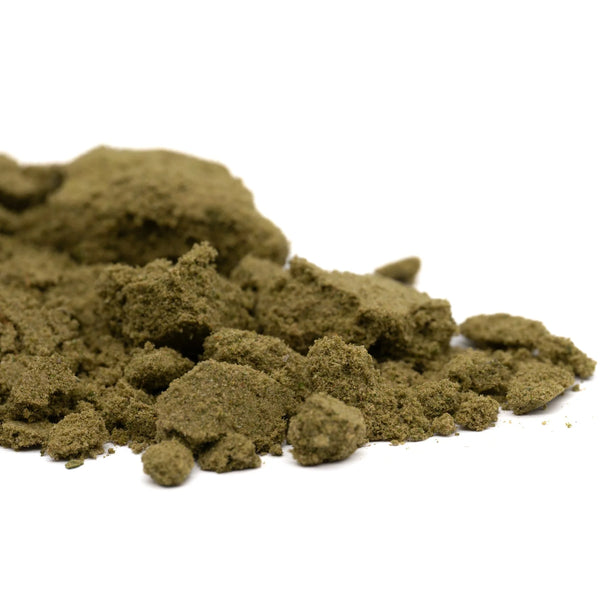
Conclusion: The Journey from Plant to Premium Kief
Understanding how THCA kief is made reveals the complexity hidden behind this deceptively simple product. From the initial selection of genetics through cultivation, harvest timing, extraction, testing, and preservation, every step influences the final product's quality, potency, and safety.
The THCA kief production process represents a marriage of art and science—combining centuries-old extraction techniques with modern understanding of chemistry, biology, and quality control. The best producers honor both tradition and innovation, using mechanical separation methods that preserve the plant's natural profile while implementing rigorous testing and preservation techniques that ensure consistent, safe products.
For consumers, this knowledge empowers better purchasing decisions. When evaluating cannabis kief extraction products, look for:
- Third-party lab testing with comprehensive COAs showing cannabinoid content and contaminant screening
- Proper packaging that protects against light, heat, moisture, and oxygen
- Transparent sourcing information about cultivation practices and source material
- Appropriate appearance—premium kief should be light gold to white in color with minimal plant material contamination
- Aromatic quality—fresh, terpene-rich kief has a strong, pleasant aroma
- Texture—proper moisture content creates kief that's neither dusty-dry nor sticky-moist but easy to handle
The importance of proper production methods cannot be overstated. Cold extraction THCA techniques preserve the natural cannabinoid profile, maintaining THCA in its acidic form rather than converting it to THC through heat. Dry sift THCA kief methods avoid solvents and chemicals, creating a pure, natural product that represents the essence of the cannabis plant in its most concentrated form.
Whether you're exploring kief for the first time or are an experienced consumer looking to deepen your understanding, appreciating the craft behind THCA kief manufacturing enhances the experience. This golden powder represents months of cultivation, careful harvest timing, precise extraction, rigorous testing, and meticulous preservation—all working together to deliver nature's most potent cannabinoid offering in its purest, most accessible form.
The next time you examine premium THCA kief, you'll see beyond the powder to the journey it took from seed to final product—a journey that combines ancient wisdom with cutting-edge science to create one of cannabis culture's most prized concentrates.
Frequently Asked Questions About THCA Kief Production
What's the difference between kief and THCA kief?
Traditional kief simply refers to collected trichome heads without regard to cannabinoid content. THCA kief specifically comes from high-THCA cannabis strains and is produced using cold-extraction methods that preserve THCA in its acidic form rather than converting it to THC. The production process focuses on maintaining low temperatures throughout to prevent decarboxylation.
How long does it take to make THCA kief?
The actual THCA kief extraction process is relatively quick—professional operations can process pounds of material in hours using commercial equipment. However, the complete timeline includes months of cultivation, precise harvest timing, proper drying and curing (2-4 weeks), and then extraction. From seed to packaged product, the entire process spans 3-5 months.
Can you make THCA kief at home?
Yes, though results won't match commercial production quality. The simplest method involves using a multi-chamber grinder with a kief catcher, though this produces small quantities slowly. More serious home producers can invest in screening boxes or DIY tumbling systems. However, home production lacks the testing, quality control, and specialized equipment that ensure the safety and consistency of commercial products.
Does kief production destroy the cannabis plant?
Making THCA kief removes trichome heads from plant material but doesn't "destroy" it. The depleted plant material (called "trim" or "shake" after kief extraction) still contains cannabinoids and can be used for edibles, lower-grade concentrates, or other products. Professional operations maximize value by extracting kief first, then using remaining material for other purposes.
What micron size is best for THCA kief?
Premium THCA kief production typically uses 70-120 micron screens, which effectively capture most trichome heads while excluding plant material. For ultra-refined kief, 70-90 microns produces higher purity but lower yields. Screens above 120 microns collect more material but with reduced purity. Professional operations often use multiple screen sizes to separate kief into different quality grades.
How should THCA kief be stored to maintain quality?
Store THCA kief in airtight, UV-blocking containers (amber glass is ideal) in a cool, dark place. Refrigeration is recommended for long-term storage. Avoid temperature fluctuations, direct light, and excessive humidity. Many consumers use humidity-control packets (Boveda packs) to maintain optimal moisture levels. Properly stored kief can maintain quality for 12-18 months or longer.
Is THCA kief stronger than regular flower?
Yes, significantly. While premium cannabis flower typically contains 15-30% THCA by weight, quality kief ranges from 40-80% THCA concentration. This makes kief roughly 2-4 times more potent than flower. However, "stronger" depends on usage—when smoked or vaporized, kief produces more immediate effects, but proper dosing is essential due to the concentrated nature.
What's the difference between THCA kief and hash?
Kief and hash are related but distinct products. Kief is loose, powdery collected trichome heads. Hash is kief that has been compressed and sometimes heated to form a solid mass. THCA kief creation focuses on preserving trichomes in their natural, uncompressed state, while hash production involves agglomeration techniques that change the texture and sometimes the cannabinoid profile.
Why does kief color vary from product to product?
Color indicates both quality and production method. Light gold to white kief suggests high purity with minimal plant material contamination—this is premium grade from dry sift THCA kief processes. Darker green kief contains more plant matter, usually from less refined extraction. Very dark kief might indicate older material or less selective screening. Amber or brown coloration can suggest degradation or late-harvest material where THCA has begun converting to other cannabinoids.
Can THCA kief decarboxylate on its own over time?
Yes, though slowly. THCA naturally converts to THC through exposure to light, heat, and oxygen—a process called spontaneous decarboxylation. This is why cold extraction THCA methods and proper storage are crucial. At room temperature in proper storage, conversion rates are minimal (potentially 1-5% per year). However, improper storage with light and heat exposure can significantly accelerate this process.

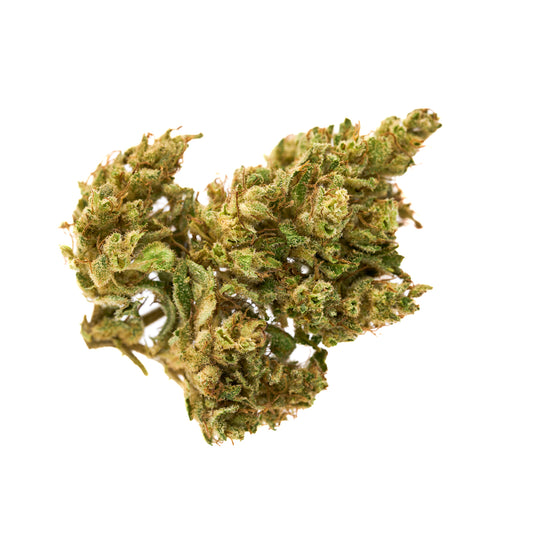
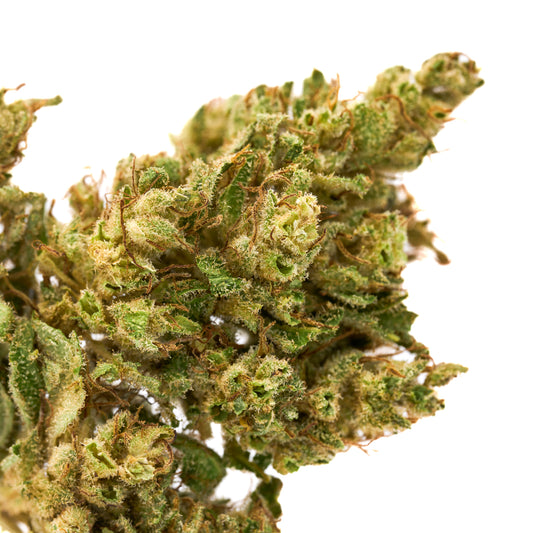
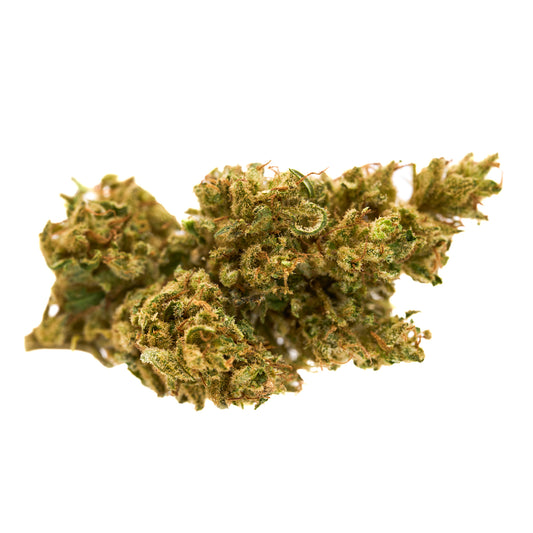
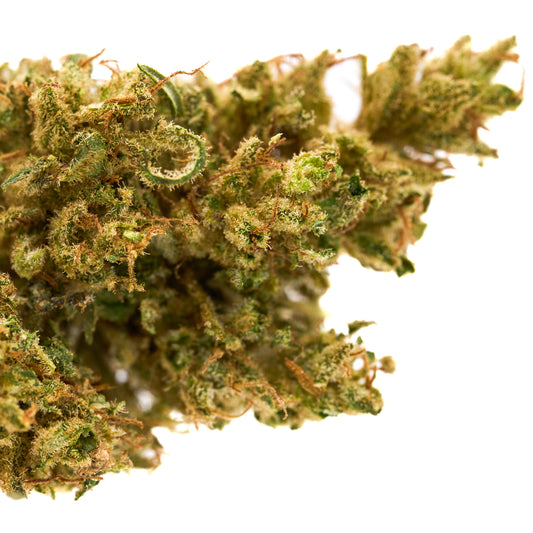
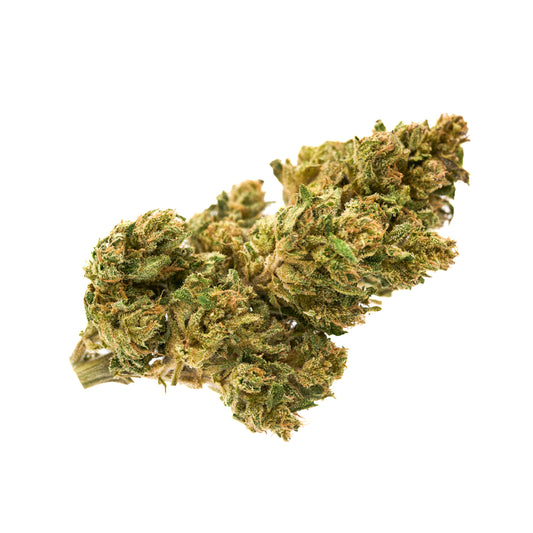
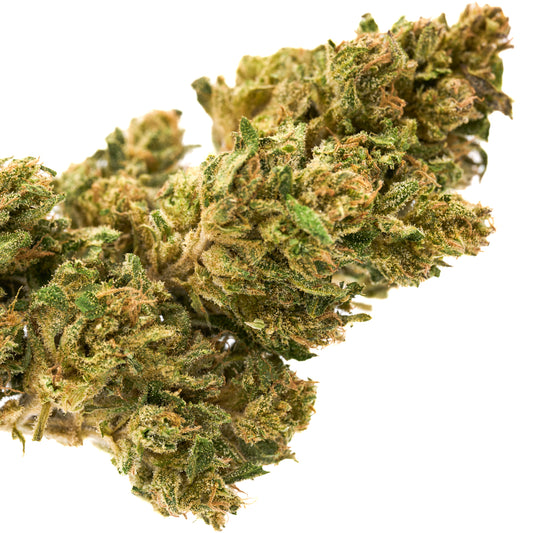



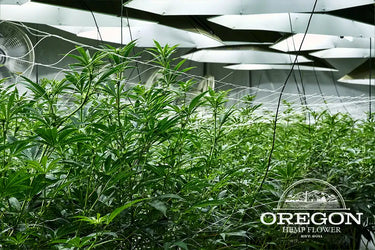
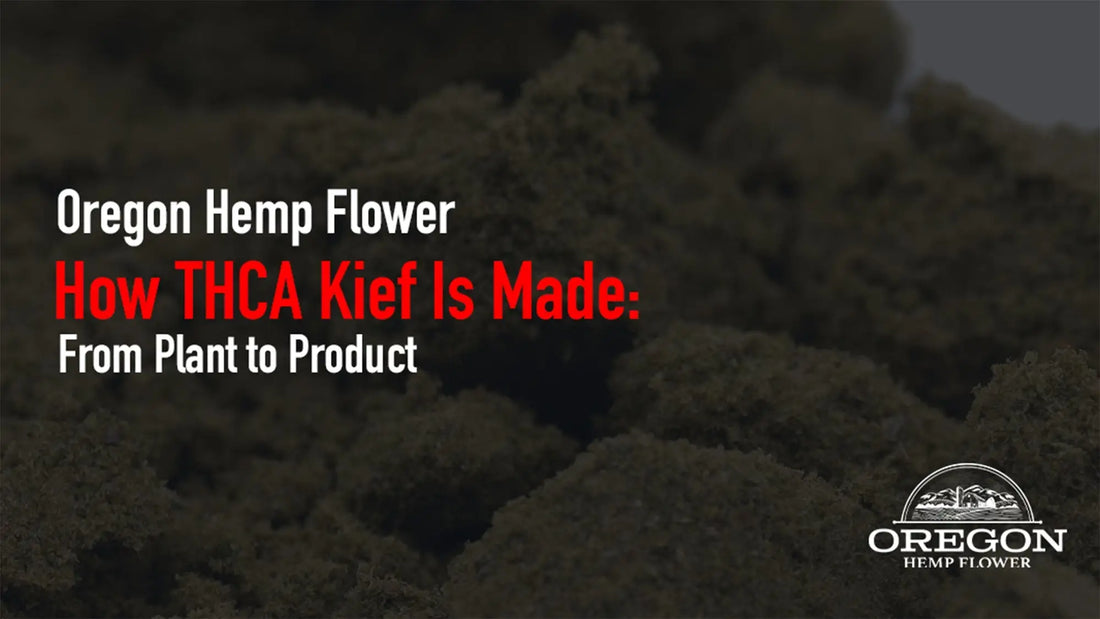
Leave a comment
Please note, comments need to be approved before they are published.